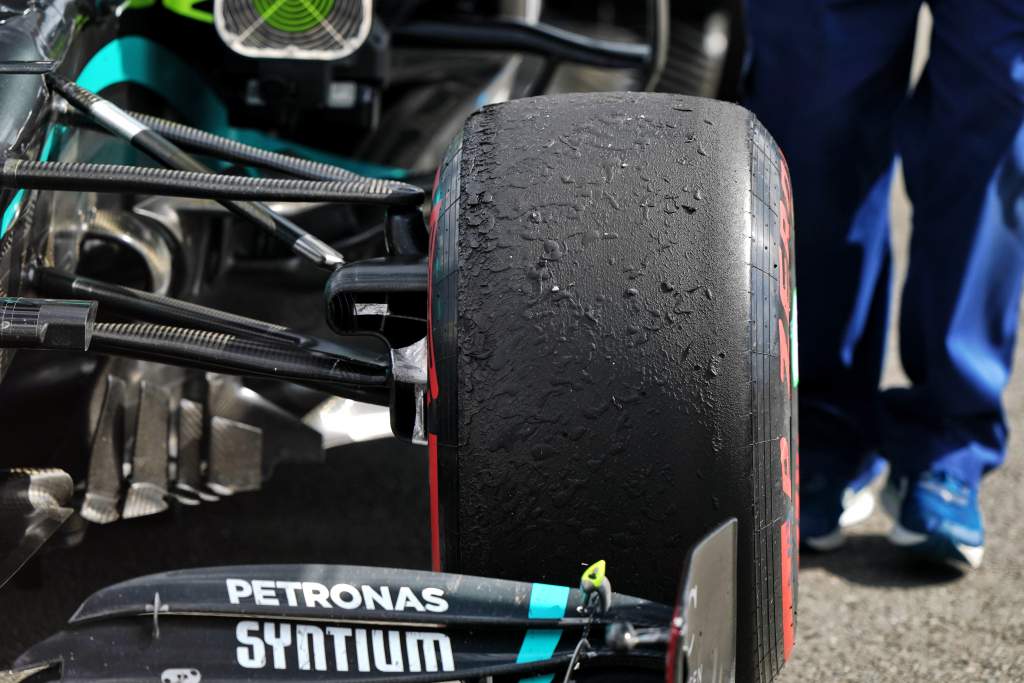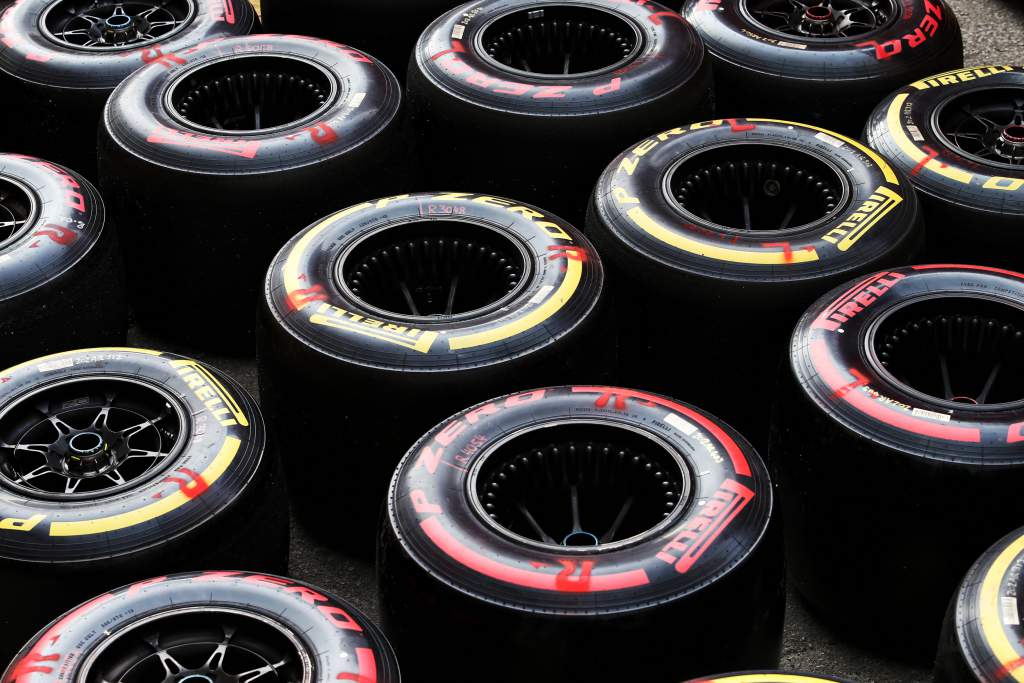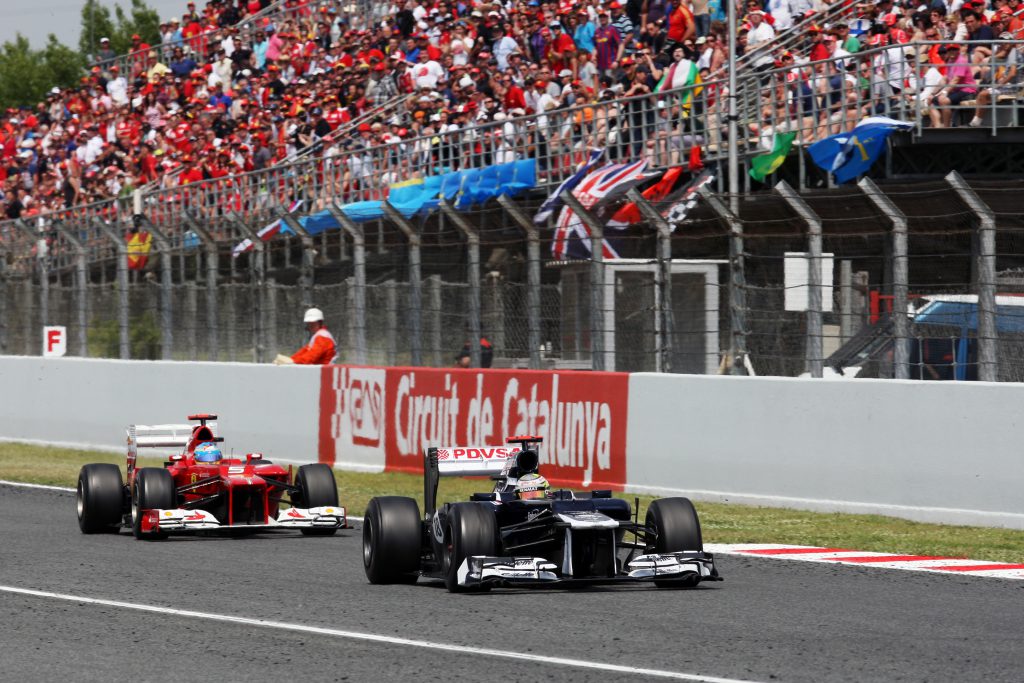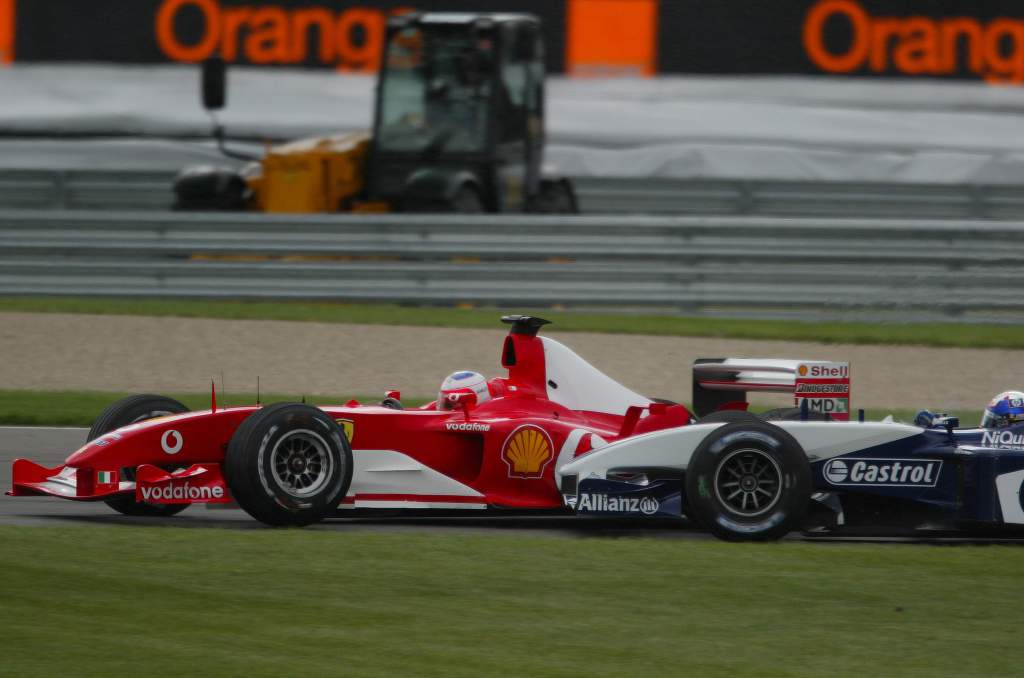Up Next

Listen to any Formula 1 driver explaining their performance after a qualifying session or race and it won’t be long before the word tyres is uttered. Likewise, sit through a race commentary or read one of Mark Hughes’s excellent grand prix analysis articles on The Race, and there will be no lack of discussion about the rubber.
This is with very good reason. While the old adage that tyres are ‘black and round’ is usually everything the vast majority watching an F1 race want to know, the reality is that they have always been hugely influential. After all, they can’t fail to be, given they connect the car to the track.
That, in itself, makes them interesting and a performance variable that contributes to the variety of the on-track action. While the car itself is the most significant performance differentiator, when it comes to the race weekend itself the tyre use tends to be the most important variable.

Yet tyres are fundamentally an opaque and, to many, tedious topic despite the frustrating truth that they are one of the most influential factors defining performance in modern F1. The difference between ‘switching on’ the tyres and failing to do so is an enormous amount of grip and, in the worst-case scenario, even driving in the dry can be like struggling on ice. Just look at the start of last year’s Portuguese Grand Prix for proof of that.
One set of tyres looks much the same as another. The construction of this year’s Pirellis has been modified but will look identical to the naked eye – not just to last year’s ones but also to any from the Pirelli control-supply era. The only noticeable differences will be the way they are marked for identification purposes.
The main reaction they elicit is that of frustration. While that’s understandable, the job of the control tyre supplier is not an easy one. After all, Pirelli is the first company ever to have produced bespoke control rubber for F1.
While there have been periods of only one tyre supplier being available, and the control tyre rules came in for 2008 – three years before Pirelli got the deal – prior to 2011 F1 was always using technology developed in a more free environment. Pirelli, meanwhile, has always been developing its product to the various targets laid out by F1.

It has also become a popular punching bag as a result. Drivers want to push and fans want to see them push, yet the level of management these tyres require makes that difficult. Thermal degradation is one thing, but the temperature-sensitivity of the rubber is a big problem – one that the drivers continue to campaign to see improved for the 2022 tyres. The dream situation is a drop-off in performance to create a strategic element, but with drivers able to attack within the grip level available without disproportionately accelerating the decline of the rubber.
Drivers and teams regularly blame tyre characteristics for their troubles. As they cannot control the specification of the tyres, it’s easy to point the finger at an external supplier. But the magical ‘bad set of tyres’, which drivers also often talked about in the Bridgestone era but at a time when it was less prevalent in the coverage, has always been there.
None of this is to say that Pirelli’s F1 tyres have been perfect, because they have not been. The 2022 tyres, designed for the switch to 18-inch wheelrims, will be a significant test. Not only will this switch have a big impact on the behaviour of the suspension systems of the cars – for the tyre is part of the suspension behaviour – but there’s also the target of producing more driver-friendly tyres. What nobody wants to see is drivers having to sit two or more seconds behind the car ahead to mitigate overheating problems.
Yet the Pirelli tyres have also been responsible for a significant proportion of the unpredictable results over the past 10 seasons. While the first half of 2012 drew criticism for being a tyre lottery, it also produced the kind of variety and upsets that everyone craves.

Variables – in car pace at different stages of the race and from track to track – are what create good racing and a broader spread of results. And Pirelli tyres, for better or worse, has been the most consistently effective in producing this.
But the fundamental problem is that it’s not easy to explain. Their behaviour is a result of countless unseen forces in the way the tyres are loaded, the temperature is built and managed and the chemical process that results from it. If the most visually obvious and celebrated example of F1 technology that impacted results is the fan strapped to the back of the short-lived Brabham BT46B of 1978, the tyres are the complete opposition.
The levels teams go to in trying to understand the tyres are astonishing, but the product of that learning is such a multi-dimensional blend of inputs and uncertainties that it makes it a very difficult sell. What’s going on is remarkable, but it is not spectacular in the conventional – or indeed sellable to fans – sense.
What’s more, a tyre war is easier to understand. While they have their downsides in terms of costs and the fact that usually one team will be the favoured partner – and it’s important to remember control rubber ensures everyone gets the same ones – it is far easier to understand and enjoy Bridgestone v Michelin. Doubly so when there are fundamental differences in the approach to tyre construction that can easily be explained.

But this isn’t to argue for one thing or the other, or to argue that the tyres aren’t an area for improvement – merely to highlight that this is the great curiosity of modern F1. One of the biggest talking points is also one of the most difficult to understand and most derided.
Short of an unexpected switch to hover-car technology, it will likely always be the way even if there is room for improvement. Grand prix racing is, and always has been a very complex and multi-faceted sporting challenge.





